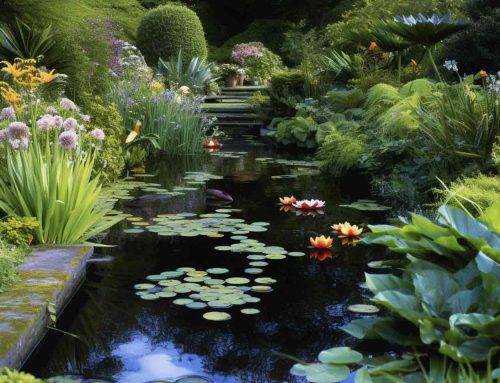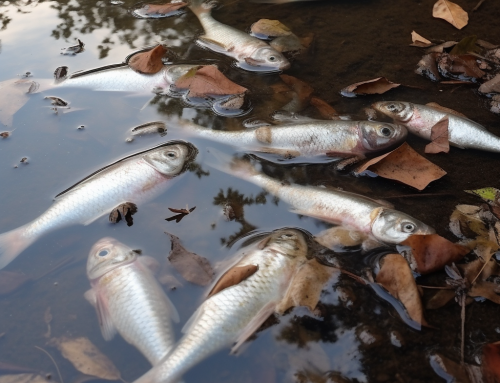
With their lush floating vegetation and elegantly showy flowers, water lilies are probably the best known and most instantly recognised of all aquatic plants and make a huge contribution to the overall look of any water garden. Available in a wide array of sizes, with flowers ranging from open and star-like to tight goblet shaped blooms and in colours from white to striking shades of yellow, red and purple, however large or small the pond, there is sure to be a variety to suit. Whether you opt for simple native forms or some of the more exotic cultivars, growing water lilies successfully largely comes down to understanding their needs and lavishing a little care and attention on them – which they will handsomely repay!
Growing water lilies
In general, water lilies need several hours of full sun each day to flower properly, though the actual amount varies considerably between different species, so unless the pond is very heavily shaded, it should be possible to find one which will do well. They also tend to do best in undisturbed water, so if possible, they should be planted away from fountains and waterfalls. Selecting the variety needs to take into account the local climate – tropical species tend to grow more rapidly, but need frost protection and warm water to thrive, making them candidates for conservatory pools, or warmer parts of the country. Dusk-flowering lilies such as the “Missouri” and “Red Flare”, for example make striking and very unusual features where conditions allow, especially if highlighted by a little tasteful lighting. By contrast, for colder or more exposed sites, the native white (Nymphaea alba) or yellow (Nuphar lutea) lilies provide all of the charm of their larger, more showy relatives, while dwarf forms allow even the smallest of ponds to accommodate a lily. Choosing your lilies wisely to suit your own particular needs is one of the most important factors in ensuring success.
How to plant water lilies
Lilies should be planted out between late spring and summer, so that they can establish themselves before the onset of winter. Tropical forms should not be planted until after the risk of frost has passed and, depending on their tenderness, may need to be removed and protected from the worst of the cold weather – storing them in moist sand at between 4-7 degrees C (41-45 degrees F). The plants should be prepared by pruning any long roots and removing overly long stems or old foliage to encourage new growth before being potted up in suitably sized plastic mesh pond baskets. At first, they need to be supported so that they are no more than 6 inches (15cm) below the surface – a pillar of bricks is ideal – and then gradually lowered as they grow until the container can finally rest on the bottom of the pond.
Care and Maintenance of water lilies
Beautiful though their blooms are, they are short lived, typically lasting only three or four days – and some of the more exotic forms less than even this. Once they are showing signs of having gone beyond their best, they need to be removed – along with any old leaves – and discarded before they become discoloured and start to rot.
One of the ironies of water lilies is that the better you meet their needs, the more rapidly they can come to outgrow their home, so periodically to maintain healthy growth, it becomes necessary to divide the plants. To keep the lily vigorous, cut sections from the crown, making sure to select young, strong shoots with a good 6 inches (15cm) of tuber attached. These should then be potted up in good fresh soil and the old crown discarded.
Propagating Lilies
There are several ways of propagating lilies, depending on the type you are growing. Most lilies have thick tubers and can be propagated by bud cuttings, though some kinds produce “eyes” rather like potatoes, which can be used to produce new plants. Dividing the rootstock will usually work for lilies with rhizomes, while some of the tropical day-blooming species produce plantlets which can be separated from their parent stock. Unlike hardy lilies, many tender or tropical species set large quantities of seed, which can be an interesting way to produce new plants if a suitable growing environment can be created – they need a constant 15-18 degrees C (59-64 degrees F) to thrive.
Water lilies are one of the most decorative and striking water plants and even the humblest of their number makes a welcome addition to a pond – while from a practical standpoint, their spreading leaves offer shade and help control algal growth. Get their care and cultivation right and you are guaranteed a show to be proud of – whichever of their many varieties you pick.









I have a pond with a variety of fish – but I have never been able to keep water lillies. I have been told that the fish eat them – is this true and is there a variety that the fish don’t like?
My water snails have large amounts of green mossy stuff growing on their shells – what is this and can I get rid of it ?
I have a water-lily which has long outgrown a basket and is taking over the pond. How can I kill this plant without harming wildlife in the pond. It has gone too far for manual extraction and use of saws/knives etc could damage liner. Would a strong weed-killer work or would it leach into the pond water.
I have a pond with water lily but they are always drying before producing any flower!!! The pond is under direct sun light and has good water circulation ! What do you think the problem is????
Hi my question is I just put in a new pond this spring 125 gallons. I purchase two water lilies at Menards that came and their own container. directions simply said drop them and water and watch them grow. how long should it be before I see any type of flower blooms. I live in Indiana the weather is still been down into the 40’s at night but also in the 70’s during the day. Thanks for your help. sincerely,Bill
Hi ???? I’m new to water Lily’s, I have them in a extra large plastic barrel, they seem to be doing good in there.. Can I put in a antimicrobial disc to keep the water clear.. Thanks ??